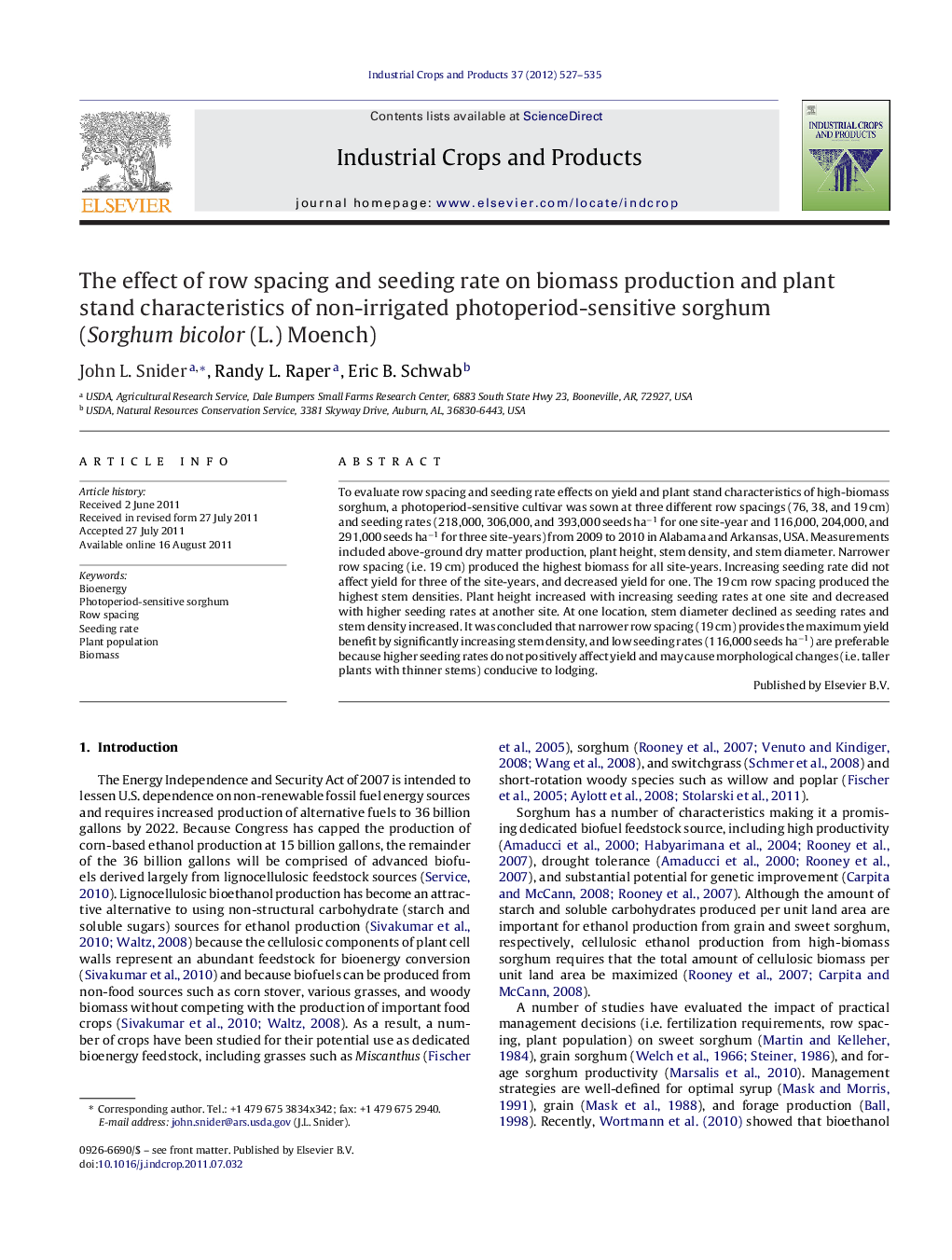| کد مقاله | کد نشریه | سال انتشار | مقاله انگلیسی | نسخه تمام متن |
|---|---|---|---|---|
| 4514266 | 1322206 | 2012 | 9 صفحه PDF | دانلود رایگان |

To evaluate row spacing and seeding rate effects on yield and plant stand characteristics of high-biomass sorghum, a photoperiod-sensitive cultivar was sown at three different row spacings (76, 38, and 19 cm) and seeding rates (218,000, 306,000, and 393,000 seeds ha−1 for one site-year and 116,000, 204,000, and 291,000 seeds ha−1 for three site-years) from 2009 to 2010 in Alabama and Arkansas, USA. Measurements included above-ground dry matter production, plant height, stem density, and stem diameter. Narrower row spacing (i.e. 19 cm) produced the highest biomass for all site-years. Increasing seeding rate did not affect yield for three of the site-years, and decreased yield for one. The 19 cm row spacing produced the highest stem densities. Plant height increased with increasing seeding rates at one site and decreased with higher seeding rates at another site. At one location, stem diameter declined as seeding rates and stem density increased. It was concluded that narrower row spacing (19 cm) provides the maximum yield benefit by significantly increasing stem density, and low seeding rates (116,000 seeds ha−1) are preferable because higher seeding rates do not positively affect yield and may cause morphological changes (i.e. taller plants with thinner stems) conducive to lodging.
► We measured row spacing and seeding rate effects on biomass yield and plant stand characteristics for photoperiod sensitive sorghum.
► Narrow row spacing (i.e. 19 cm) provided the maximum dry matter yields for all four site-years examined.
► Plant population responded positively to successively narrower row spacing.
► Low seeding rates (4.48 kg ha−1) are preferable because higher seeding rates do not positively affect yield.
► In some instances, high seeding rates cause morphological changes (i.e. taller plants with thinner stems) conducive to lodging.
Journal: Industrial Crops and Products - Volume 37, Issue 1, May 2012, Pages 527–535